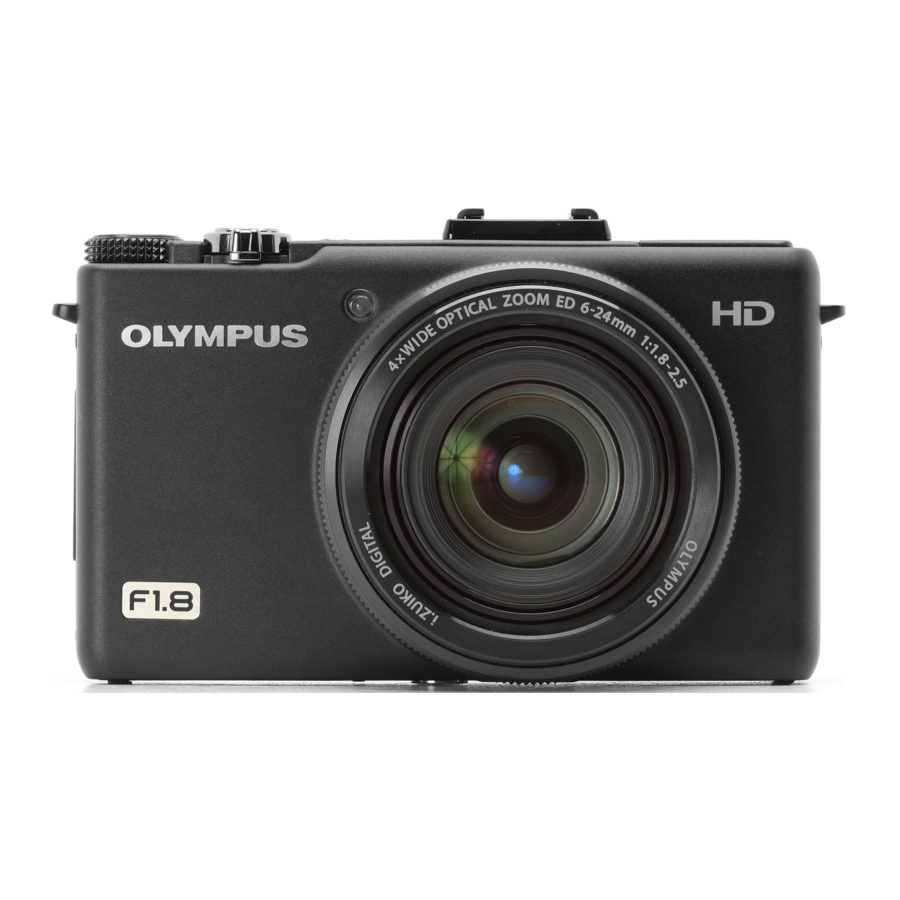Olympus XZ-1 팁과 요령 매뉴얼 - 페이지 28
{카테고리_이름} Olympus XZ-1에 대한 팁과 요령 매뉴얼을 온라인으로 검색하거나 PDF를 다운로드하세요. Olympus XZ-1 30 페이지. Body black
Olympus XZ-1에 대해서도 마찬가지입니다: 사양 (5 페이지)

XZ-1 Tips
page 28 of 29
the size of the file goes up dramatically, using far more storage space and working
memory; and making image processing software work much harder, and therefore take
longer, for any image change we make when using it.
Indeed, when we get to 16-bit numbers, each pixel can be described as any one of 65,536
brightness values, and that seems like total overkill, doesn't it? So why is 16-bit (or
anything above 8-bit) an absolute necessity for a fine monochrome image?
If we didn't alter brightness values in Photoshop (or other software) it wouldn't matter, as
long as we had a perfectly-exposed 8-bit image in the first place. But we DO alter
brightness values by stretching them hither and thither in Photoshop. Increasing or
decreasing brightness. And contrast. That is precisely why we use Photoshop!
If we manipulate an 8-bit file in Photoshop, we often squash some parts of that 256-step
scale together (so that gray brightness values that were different are now the same), and
we stretch others apart. Now, between each of the just noticeable difference steps, spaces
open up. These get filled by the same gray as one of the adjoining pixels. Our eye can tell
it should be a different gray though.The smooth transition from one gray to another has
just become an abrupt step. A visible step.
When it becomes obvious enough to show, this effect is known as 'posterisation'. It is
unpleasant to see, and it is very easy to provoke in monochrome. In an 8-bit image, with
only minor manipulation, it is almost inevitable. There are real limitations to how much
you can alter the brightness levels of an 8-bit JPG.
But, if you start with a 16-bit RAW file, and adjust it in RAW software like Olympus
Viewer BEFORE saving it as an 8-bit JPG... the outcome will be much, much better.
Why adjust the 16-bit RAW file? Well, here you are working with 65,536 brightness
values, not 256. If you now save this 16 bit RAW file to 8 bit JPG, the reduction from
thousands of brightness values (even if some of the 65,536 were missing) fills up the 256
JPG-brightness-levels nicely. No matter how drastically you altered the brightness and
contrast of the RAW file! After 8-bit output, you get a continuous range of grays -- no
'white spikes of doom' on the histogram. So the lesson for fine monochrome digital
